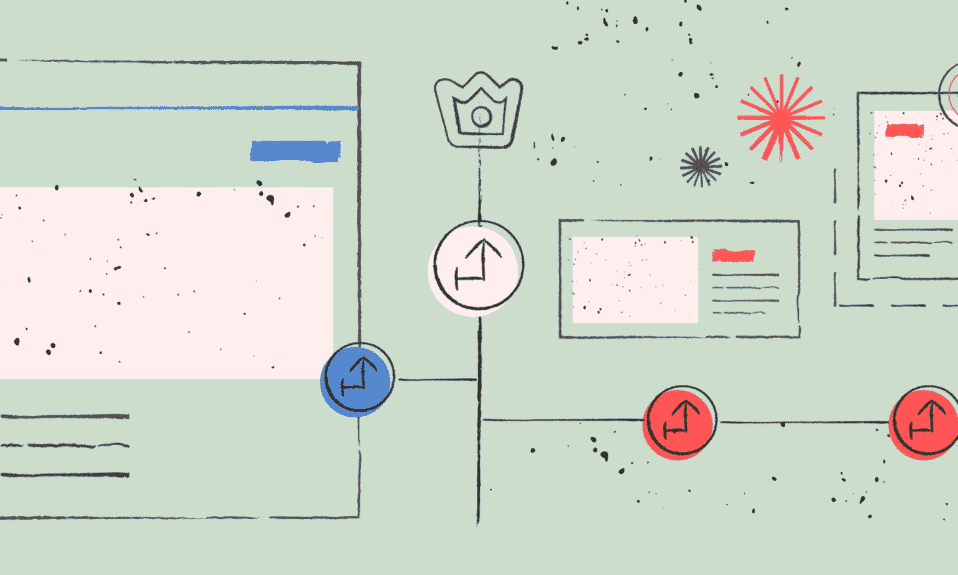Introduction
In the first part of this series, I laid out the cognitive pivot required for product managers in the age of generative AI—a shift in mindset from building feature-led products to orchestrating adaptive, intelligent systems. That piece was about vision and philosophy: why AI product management demands a new way of thinking. In this second instalment, we move from theory to practice. Here, I will draw on more than fifteen years of experience in product management and enterprise systems to explore how to build, evaluate, and manage AI-first products. The focus is practical guidance—crafting MVPs, expanding toolkits, balancing speed with strategy, and defining new success metrics—while still maintaining a strategic lens that ensures our work scales and endures.
The journey of building AI-first products is unlike traditional software product management. Models evolve continuously, user interactions adapt dynamically, and the line between technology and behavior is increasingly blurred. This requires a rethinking of frameworks, processes, and evaluation techniques. As you read through this piece, you will notice fewer bulleted lists and more narrative depth because the real work of AI product management lies in the nuances, in the spaces where a checklist is inadequate, and where judgment, rigor, and systems thinking must prevail.
Designing the AI-First MVP
An MVP for an AI-first product is not simply a smaller version of the final system. It is a carefully designed experiment that tests whether intelligence, adaptation, and trust can emerge in a usable way. For an AI product manager, this stage is where philosophy meets execution. The objective is not to show every capability of a model but to validate the smallest unit of adaptive value. To achieve this, three dimensions matter most: scoping the MVP, balancing probabilistic AI with deterministic guardrails, and embedding evaluation from the start.
Scoping the AI-First MVP
Traditional MVPs succeed by focusing on a single feature or workflow that delivers immediate user value. In AI-first products, scope is trickier because value often emerges over time through interaction and learning. An AI product manager must therefore identify a task that is narrow enough to be testable, yet rich enough to reveal adaptive potential.
Take the case of spend analytics. A conventional MVP might aim to build a dashboard that reports supplier spend by category. In an AI-first MVP, the focus shifts: can the model automatically classify transactions into categories with enough confidence that analysts save time? The output may not be perfect, but if analysts consistently save effort, the MVP demonstrates adaptive value.
A good rule of thumb is to ask: What is the smallest behavior we can validate that feels intelligent to the user? That behavior becomes the anchor of the MVP. By resisting the temptation to overbuild, the AI product manager protects the team from brittle demos that fail outside of controlled conditions. Instead, the MVP becomes a probe into how intelligence functions in practice.
Guardrails and Hybrid Design
Pure model outputs are rarely production-ready. AI systems produce errors, hallucinations, and edge cases that can undermine user trust. This is why most successful AI-first MVPs combine probabilistic models with deterministic components. The role of the AI product manager is to design this hybrid carefully.
In spend analytics, for example, the MVP might allow the model to auto-classify transactions with high confidence scores, while routing low-confidence cases to a rules engine or a human analyst. This hybrid design accomplishes two things. First, it shows adaptive intelligence in action, where the model continuously handles the easy cases. Second, it prevents credibility loss by ensuring that ambiguous cases receive deterministic treatment.
The design of guardrails can vary: confidence thresholds, prompt engineering, fallback workflows, or human-in-the-loop review. What matters most is intentionality. The AI product manager must define which errors are tolerable, which are unacceptable, and how the system should respond when uncertainty arises. This way, the MVP demonstrates not only intelligence but also reliability, which is essential for adoption.
Embedding Evaluation from Day One
Many MVPs fail because evaluation is treated as an afterthought. In AI-first products, evaluation is inseparable from design. An AI product manager should define, from the start, how success will be measured—not only in terms of accuracy but also in terms of usability and trust.
Accuracy metrics like precision and recall are important, but they are not enough. An analyst who sees a correct output but cannot understand why it was produced may still distrust the system. Conversely, an analyst who sees an incorrect output that is transparently flagged as “low confidence” may continue to trust and use the tool. That is why evaluation must extend to user perception, recovery mechanisms, and long-term adaptability.
Embedding evaluation means logging interactions, tracking confidence calibration, and measuring user actions like overrides or acceptance rates. The MVP should include dashboards that surface these insights early. This allows the product team to iterate not just on the model but on the overall experience. The AI product manager must treat evaluation as part of the product, not as a separate analytics project.
By doing so, the MVP evolves as a living experiment. Each user interaction becomes data, each error becomes a lesson, and each adaptation builds credibility. This is how an AI-first MVP avoids being a demo frozen in time and instead becomes the foundation of a scalable, intelligent system.
Designing the AI-first MVP requires rethinking what “minimal” means. For an AI product manager, it is about scoping intelligence to its smallest useful behavior, protecting adoption with guardrails, and embedding evaluation into the fabric of the product. When done well, the MVP is not a proof-of-concept to impress stakeholders. It is a learning system that grows with real users, data, and trust.
Expanding the AI Product Manager Toolkit
Being an AI product manager requires more than traditional product management skills. It is not enough to know roadmaps, feature prioritization, or market analysis. The AI-first world demands new capabilities: fluency with data, intuition about models, comfort with experimentation, and a structured way of balancing probabilistic systems with enterprise-grade reliability. Expanding the toolkit means adding depth in areas that were once the domain of engineers or data scientists but are now essential for effective product leadership.
Data Literacy Beyond Dashboards
For a traditional product manager, data literacy often meant reading dashboards, running SQL queries, and making decisions from structured reports. For an AI product manager, data literacy must go further.
You need to understand how raw data is captured, labeled, cleaned, and transformed before it ever fuels a model. For instance, in spend analytics, supplier data often arrives with inconsistent names, currencies, and taxonomies. Without intervention, even the most sophisticated model will produce noisy outputs.
This does not mean the AI product manager must become a data engineer. It does mean you must be fluent in concepts like ETL pipelines, schema drift, feature engineering, and annotation quality. When engineers say, “We have label imbalance,” you should be able to parse the implications: the model may overfit to frequent categories and ignore long-tail suppliers.
In short, data literacy is not a “nice to have.” It is the lens through which you anticipate risks, ask sharper questions, and set realistic product expectations.
Models as Adaptive Partners
Traditional software components behave predictably: if input A is given, output B follows. AI models behave differently. They operate in gradients of probability, producing outputs that may be right most of the time but wrong in critical cases. For the AI product manager, this requires a new kind of intuition: not about deterministic logic, but about probabilistic behavior.
In practice, this means learning to interpret model metrics and their trade-offs. Precision and recall, for instance, are not academic terms but real levers that affect user experience. Choosing higher recall in supplier categorization might capture more spend but introduce noise; higher precision might reduce noise but miss critical transactions. The AI product manager must be comfortable making these trade-offs in partnership with data scientists, framing them not as abstract metrics but as product decisions tied to user trust.
This shift also demands hands-on familiarity. The most effective AI product managers run small experiments themselves—prompting a model, testing responses, examining outputs in context. They treat models not as black boxes but as collaborators that must be understood, guided, and constrained. This mindset elevates the role from requirements manager to system orchestrator.
Prompt Engineering and Beyond
With generative AI, the boundary between product design and system behavior has blurred. Prompt design, grounding strategies, and guardrail configurations are now part of the product manager’s toolkit.
For example, if your procurement assistant bot hallucinates contract clauses, that is not just a model problem—it is a product design problem. As the AI product manager, you must define clear constraints: grounding outputs in verified documents, limiting free-form generation, and introducing structured fallback responses when confidence is low.
Prompt engineering is not only about crafting clever text instructions. It is about systematic experimentation, versioning prompts like code, and tracking their impact on outcomes. In many organizations, PMs now own prompt libraries just as they once owned requirement documents.
Tooling and Ecosystem Awareness
Finally, an AI product manager must broaden their awareness of tools, platforms, and integration possibilities. Building AI-first products no longer means starting from scratch. Cloud providers, open-source frameworks, and orchestration layers offer reusable components that can accelerate delivery. Yet, without discernment, teams can drown in options.
Consider orchestration frameworks like LangChain or CrewAI. They allow chaining multiple model calls or coordinating multi-agent workflows. For a PM building spend analytics, these tools may enable supplier risk assessment agents that converse with classification agents. But blindly adopting them without evaluating cost, scalability, and governance could introduce fragility.
Here, the PM’s responsibility is to frame adoption strategically: Which components should we outsource, and which are core differentiators? How do we ensure the ecosystem does not lock us into brittle dependencies? By mapping tools against long-term strategy, the AI product manager ensures speed does not undermine resilience.
Expanding the toolkit is about embracing new responsibilities without losing the essence of product management. For the AI product manager, data becomes design material, models become adaptive partners, and tools become strategic accelerators. Mastering this expanded toolkit is what separates those who simply manage AI projects from those who lead enduring AI-first products.
Balancing Speed with Strategy
The AI product manager operates under immense pressure. On one hand, AI-first markets reward speed: the ability to test, release, and iterate quickly often determines competitive advantage. On the other, enterprise customers demand stability, governance, and scalability—qualities that are not always compatible with the “move fast and break things” ethos. The art of AI-first product management lies in reconciling these two imperatives, ensuring experimentation does not erode trust, and strategy does not paralyze progress.
The Dual Horizon Approach
One effective method for balancing speed and strategy is what I call the dual horizon approach. Horizon One focuses on rapid experimentation, where lightweight prototypes and small pilots validate core assumptions. Horizon Two emphasizes enterprise readiness, where models are hardened, pipelines stabilized, and governance applied.
For instance, in spend analytics, Horizon One might involve quickly testing whether a model can auto-classify supplier categories with 75% accuracy using limited training data. This early proof signals viability. Horizon Two then operationalizes the solution: scaling accuracy to 90%+, embedding monitoring dashboards, and enforcing audit trails.
The AI product manager must consciously move between these horizons. Staying too long in Horizon One risks delivering demos that never mature. Staying too long in Horizon Two risks being outpaced by faster competitors. The skill lies in timing the transitions and managing stakeholder expectations across both modes.
Guardrails for Responsible Experimentation
Speed without discipline can erode credibility. AI models, particularly generative ones, can hallucinate, misclassify, or generate outputs that violate compliance rules. To balance velocity with responsibility, the AI product manager must define guardrails for experimentation.
These guardrails include clear criteria for what is acceptable during MVP phases versus what is non-negotiable. For example, in a procurement context, a supplier risk agent might surface preliminary risk scores with the disclaimer that they are “directional only.” However, the same model cannot be used to trigger financial decisions until validation thresholds are met.
Guardrails also mean designing safe sandboxes for testing—separating production data from experimentation environments, enforcing role-based access, and logging model behavior for future audits. By embedding such safeguards, the AI product manager enables rapid exploration without compromising enterprise trust.
Communicating Trade-Offs to Stakeholders
Balancing speed and strategy is not just a technical challenge; it is a communication challenge. Business leaders often demand quick wins, while engineering teams emphasize long-term robustness. The AI product manager acts as the translator between these worlds.
This requires framing trade-offs in terms stakeholders understand. Instead of saying, “The model’s precision is only 85%,” the PM might explain, “If we release now, buyers will see fewer errors quickly, but supplier managers may lose trust if edge cases fail.” By connecting technical realities to business impact, the AI product manager ensures stakeholders make informed decisions about when to push forward and when to hold back.
Over time, this builds credibility. Executives learn to trust the PM’s judgment, engineers feel their concerns are heard, and customers receive products that evolve quickly without collapsing under pressure.
Building Organizational Patience
The final ingredient in balancing speed and strategy is cultural. Organizations accustomed to deterministic software often underestimate the iterative nature of AI. They expect features to “work” at launch, rather than improve through feedback loops.
The AI product manager must reset these expectations. By framing launches as progressive capability rollouts rather than final deliveries, they create space for iteration. A spend categorization engine, for example, may launch at 80% accuracy with the explicit roadmap of reaching 92% over the next six months as more training data is ingested.
Such transparency fosters organizational patience. Instead of treating imperfection as failure, the company sees it as part of a deliberate improvement path. This patience becomes a competitive advantage, allowing teams to sustain velocity without burning trust.
Balancing speed with strategy is a defining challenge for the AI product manager. By working across dual horizons, embedding guardrails, communicating trade-offs effectively, and cultivating organizational patience, PMs can navigate this tension with skill. The result is not reckless acceleration or endless caution but a deliberate rhythm of building fast while scaling wisely.
Redefining Success Metrics for AI Product Managers
Traditional software success metrics—uptime, response time, defect count—remain important, but they are insufficient for AI-first products. An AI product manager must measure not just system performance but also model accuracy, adaptability, fairness, trustworthiness, and user adoption behaviors. Without a new metric system, teams risk optimizing for the wrong outcomes, delivering products that are technically impressive but fail to create enduring business value.
From Deterministic KPIs to Probabilistic KPIs
Conventional products are deterministic: a button click either works or fails. AI products are probabilistic, producing outputs with varying degrees of confidence. This demands probabilistic KPIs that capture not only outcomes but their reliability.
Take the case of supplier categorization in spend analytics. A deterministic metric might be: “All suppliers are categorized correctly.” An AI-aware metric must instead measure: “Model achieves 90% classification accuracy at confidence levels above 0.8.” The difference matters, because business users need to know not only what the model predicts but also how certain it is.
An AI product manager defines thresholds for when probabilistic metrics are acceptable and when human review must intervene. This calibration ensures that the product balances automation with accountability.
Multi-Dimensional Success: Accuracy, Coverage, and Drift
AI performance cannot be captured in a single number. An effective metric system must account for multiple dimensions:
- Accuracy: How often is the prediction correct?
- Coverage: What percentage of cases does the model handle confidently, versus sending to fallback workflows?
- Drift: How stable is performance as data evolves over weeks or months?
For example, an accounts payable invoice extraction model may hit 95% accuracy today but degrade to 85% after three months as vendors change invoice templates. Without drift monitoring, the system’s reliability erodes silently.
The AI product manager must design dashboards that show these dimensions together. Success is not a static number but a living balance between accuracy, coverage, and resilience against drift.
Business Impact Metrics vs. Model Metrics
AI models can achieve high technical scores without delivering business value. That is why an AI product manager must layer business impact metrics above model metrics.
In procurement analytics, the model metric might be “classification accuracy.” But the business impact metric could be “percentage of spend categorized at a level granular enough to negotiate savings.” If the model achieves 90% accuracy but only at a broad level (e.g., “IT services” vs. “cloud hosting”), the business cannot act on it.
By tying model performance directly to business outcomes—savings realized, fraud prevented, hours of manual review reduced—the AI product manager ensures success is measured where it matters most.
Trust and Adoption as Core Metrics
AI products succeed not only when models work but when humans trust and adopt them. This means trust and adoption must be explicit success metrics.
Trust can be measured via user surveys, feedback loops, and error overrides. If procurement analysts override the model’s recommendation in 40% of cases, that signals low trust regardless of accuracy scores. Adoption can be measured through usage telemetry—how often features are used, abandoned, or bypassed.
An AI product manager should not treat trust as a “soft” outcome. Without trust, the product will never scale, no matter how technically advanced. Metrics that quantify trust and adoption ensure teams build solutions users embrace, not resist.
Continuous Evaluation Frameworks
Finally, success metrics for AI cannot be static. Unlike traditional features that remain stable, models evolve with data. This makes continuous evaluation frameworks essential.
Such frameworks include:
- Online monitoring: tracking model accuracy in production.
- Shadow testing: running new models alongside old ones before swapping them.
- Feedback loops: capturing user corrections and feeding them back into retraining cycles.
For spend analytics, this may mean continuously checking whether new supplier invoices are categorized correctly, and adjusting classification thresholds dynamically. The AI product manager must institutionalize these loops to ensure metrics evolve alongside the product.
Success in AI-first product management is not measured by uptime alone. It is measured by a portfolio of metrics—probabilistic accuracy, coverage, drift, business impact, trust, and adoption. By shifting the focus from deterministic to adaptive evaluation, the AI product manager creates a more complete view of product health and ensures the product scales sustainably.
Orchestrating Cross-Functional AI Teams
No AI product is built in isolation. Even the most well-crafted roadmap will stall without a team that spans disciplines and aligns on a shared mission. For an AI product manager, orchestrating such a team is both the greatest challenge and the greatest source of leverage. Traditional product teams already rely on cross-functional collaboration, but AI-first products raise the stakes: the work now involves engineers, data scientists, ML researchers, UX designers, compliance experts, and business stakeholders, all operating with different vocabularies and incentives. Turning this orchestra into harmony is the craft of leadership.
The AI Product Manager as Translator
The AI product manager must act as a translator across technical and non-technical worlds. Engineers think in terms of architecture and scalability. Data scientists obsess about model performance, precision, and recall. UX designers focus on interaction flows and user trust. Legal and compliance teams prioritize risk reduction. Left unchecked, these priorities often conflict. The AI product manager bridges them by framing conversations in terms of product outcomes rather than domain-specific metrics. Instead of arguing about whether F1 score or recall is “good enough,” the PM re-centers the discussion: Does the model’s output meet the threshold for user trust and business value in this context?
Managing Friction and Incentives
Friction is inevitable when building AI products. Data scientists may push for larger models or more experimentation, while engineers push back on infrastructure costs. Designers may demand transparency features that complicate workflows, while legal teams tighten constraints that slow releases. The AI product manager cannot wish these tensions away—they are the system. The craft lies in aligning incentives so that conflicts become productive. This might mean framing infrastructure investments as enablers of faster iteration, or positioning explainability features as competitive differentiators rather than compliance burdens. By reframing incentives, the PM turns conflict into forward motion.
Collaboration Rituals that Work
Orchestration requires more than ad-hoc meetings. Rituals create rhythm. Successful AI-first teams often use dual-cadence reviews: one track focused on model performance and data quality, another on product usability and business impact. These parallel rhythms ensure no one discipline dominates the agenda. Pairing data scientists with UX designers in early prototyping sessions can also uncover subtle user experience risks that pure accuracy metrics miss. Embedding legal or compliance experts into sprint reviews—not as gatekeepers but as contributors—reduces late-stage blockers. The AI product manager designs these rituals intentionally, not as bureaucracy but as the scaffolding that keeps the team moving in sync.
The Human Factor
AI-first teams thrive not just on process but on trust. Engineers need to believe that data scientists will not chase academic perfection at the expense of shipping. Designers need to trust that engineers will not hide behind technical jargon to avoid UX improvements. Legal teams need to feel that their concerns are heard early, not after the fact. Building this trust requires the AI product manager to model curiosity, humility, and clarity. Asking naive questions in technical reviews shows that it is safe for others to do the same. Admitting uncertainty about model limitations signals honesty. Over time, these behaviors establish psychological safety, the real foundation of innovation.
Why Orchestration is Strategic
Cross-functional orchestration is not a tactical footnote—it is strategy in practice. A brilliant roadmap fails if the team does not converge on execution. Conversely, even an average roadmap can succeed if a team is deeply aligned and motivated. For AI product managers, this orchestration becomes the differentiator. Competitors can copy models and features, but they cannot easily replicate the trust, rhythm, and shared language that a well-orchestrated team builds. That cultural capital is the moat.
Conclusion: The Evolving Role of the AI Product Manager
In Part I of this series, I argued that product managers must undergo a cognitive pivot—from feature-led roadmaps to adaptive, intelligent systems that evolve with use. That shift in mindset was essential but incomplete without practice. In this second part, we explored how to design AI-first MVPs, balance speed with long-term strategy, expand toolkits, orchestrate cross-functional teams, and define success in new terms. Together, these form a practical foundation for the AI product manager.
The path forward is clear. Start small but with intent. Anchor your MVP in a defined business problem and measure outcomes beyond surface-level metrics. Build trust alongside impact. Position yourself as the orchestrator of diverse skills—engineering, design, domain knowledge, and data science. And above all, embrace the dual mandate: move fast, but think long-term.
The opportunity is immense. Enterprise systems are being reimagined, workflows are evolving, and every domain is open for reinvention. The AI product manager is not a support role in this shift. It is the role that determines which organizations thrive in the next decade.
If you already practice product management, act now. Audit your portfolio through the lens of AI-first thinking. Spot where adaptability, automation, and intelligence can create step-change improvements. Then experiment, measure, and refine. Don’t wait for perfect data or flawless models. Begin where you are and iterate forward.
The future of product management belongs to those who pair vision with execution. Step into that role. The time to act is now.
Feature image courtesy: Kevin Smith






